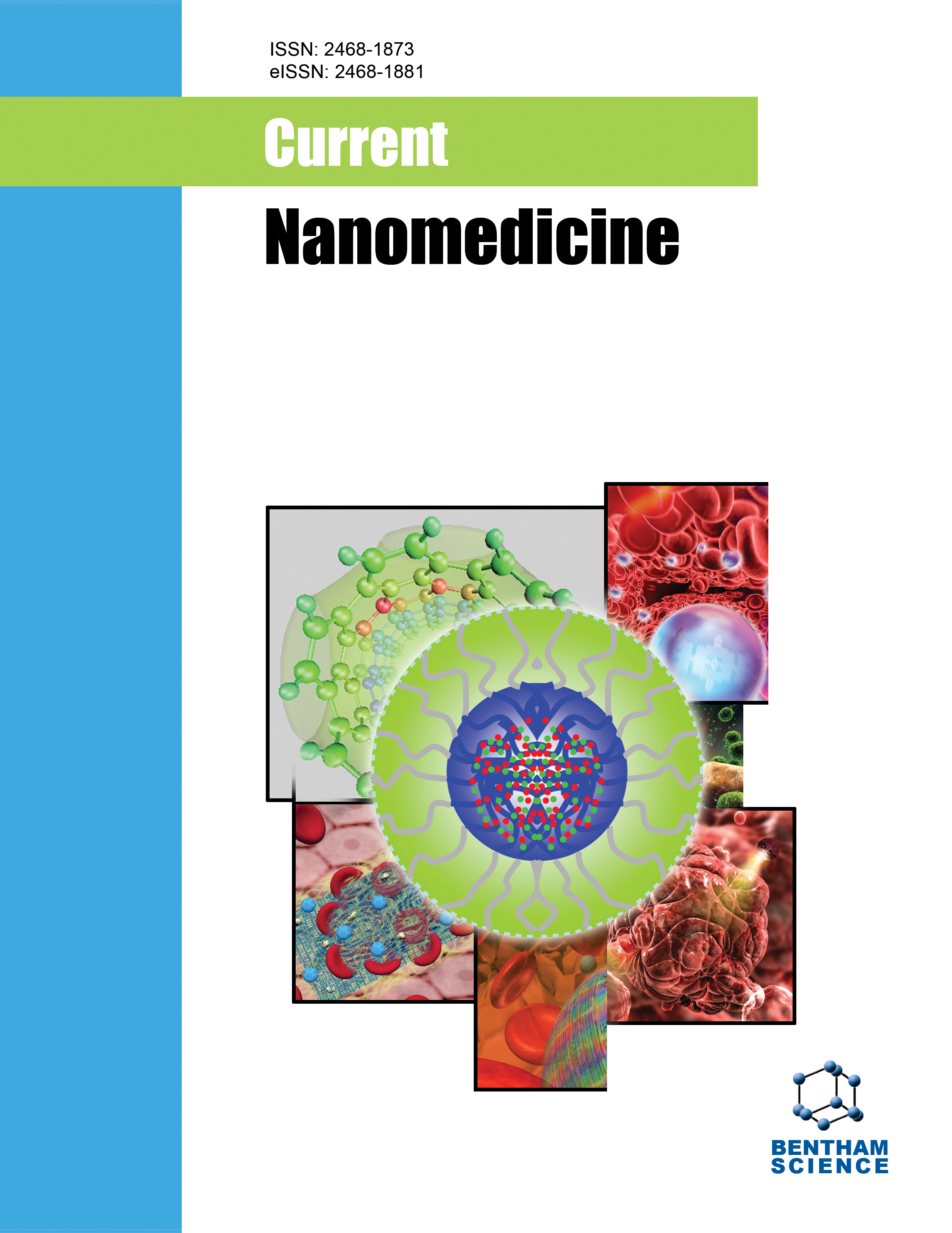- Home
- A-Z Publications
- Current Nanomedicine
- Previous Issues
- Volume 12, Issue 1, 2022
Current Nanomedicine - Volume 12, Issue 1, 2022
Volume 12, Issue 1, 2022
-
-
Applications of Herbal Drug Delivery Through a Targeted Approach Using Vesicular Carriers
More LessAuthors: Dipthi Shree, Chinam N. Patra, Sasmita K. Acharjya and Biswa M. SahooBackground and Objective: Herbal medicines exhibit pronounced therapeutic activity with minimal toxic effects. The use of the herbal drug through the oral route is considered to be an impediment owing to its poor bioavailability. Therefore, an alternative approach to the Transdermal route was adopted. It has been a challenge for pharmaceutical scientists to deliver the herbal compound effectively through the skin due to the pr Read More
-
-
-
Iron Oxide Nano Particles and its Applications to Cure HER2-Positive Mediated Breast Cancer
More LessAuthors: Dilpreet Singh, Balak D. Kurmi, G.S. Sarma, Sankha Bhattacharya and Sanjay NagdevBackground: Breast cancer is the second leading cause of death in women worldwide. The extremely rapid rate of metastasis and the propensity to develop resistance to all non-traditional treatments make them equally difficult to treat, which are the causes of increased morbidity and death in breast melanoma patients. Experts all around the world have been focusing on the first detection of a breast lump so that action can be Read More
-
-
-
Formulation and Evaluation of Naproxen Sodium Loaded Invasomes for Topical Delivery
More LessAuthors: Abbaraju K. Shailaja and Uzma AfreenIntroduction: Naproxen sodium is a non-steroidal anti-inflammatory agent used in the treatment of rheumatoid arthritis and ankylosing spondylitis to relieve pain and inflammation. It mainly acts by inhibiting COX1 and COX2 receptors. By inhibiting the COX1 receptor, it causes severe gastric bleeding and peptic ulcer, and by inhibiting the COX2 receptor, it causes cardiovascular side effects. In order to avoid the adverse effect Read More
-
-
-
Nanoplatforms for Promoting Osteogenesis in Ovariectomy-Induced Osteoporosis in the Experimental Model
More LessAuthors: Enas A. Fouad-Elhady, Hadeer A. Aglan, Rasha E. Hassan, Gilane M. Sabry and Hanaa H. AhmedBackground: Osteoporosis is a debilitating bone ailment characterized by the obvious loss of bone mass and bone microarchitecture impairment. Objective: This study aimed to illuminate the in vivo usefulness of nanotechnology as a treatment for osteoporosis via analyzing the effectiveness of nano-hydroxyapatite (nHa), nano-hydroxyapatite/ chitosan (nHa/C), and nano-hydroxyapatite/silver (nHa/S) in mitigation of osteoporosis Read More
-
-
-
Ultrasmall Superparamagnetic Iron Oxide Nanoparticles Synthesized by Micellar Approach as a Potential Dual-Mode T1-T2 Contrast Agent
More LessObjective: A micellar approach is used to synthesize Ultrasmall Superparamagnetic Iron Oxide Nanoparticles (USPIONs) with an average diameter of 3.4±0.5 nm, suitable for dual-mode T1T2 contrast agents. Methods: Micelles with 3.8 nm, measured by dynamic light scattering, were obtained by selforganizing the surfactant iron(III) dodecyl sulfate (IDS) in 1-octanol. IDS was prepared by replacing Na+ cation in sodium dodecyl Read More
-
-
-
Biogenic ZnO Nanoflowers: As an Alternative Antibacterial Nanomedicine
More LessBackground: Zinc oxide (ZnO) nanoparticles have been widely investigated for the development of next-generation nano-antibiotics against a broad range of microorganisms including multi-drug resistance. The morphology of nanomaterials plays an important role in antibacterial activity. Objective: The research goal is focused on the development of a low-cost antibacterial agent. Methods: The biosynthesis method was us Read More
-
Most Read This Month
Article
content/journals/cnanom
Journal
10
5
false
en


